126 visual reports from 5 countries
The IMO received over 126 reports so far about a fireball event that occurred over The Netherlands on September 22th, 2020 around 03:53 Universal Time. The IMO event #2020-5282 was mainly seen from the Netherlands but we also received reports from UK, Germany, Denmark and Belgium.
If you witnessed this event and/or if you have a video or a photo of this event, please
Submit an Official Fireball Report
If you want to learn more about Fireballs: read our Fireball FAQ.
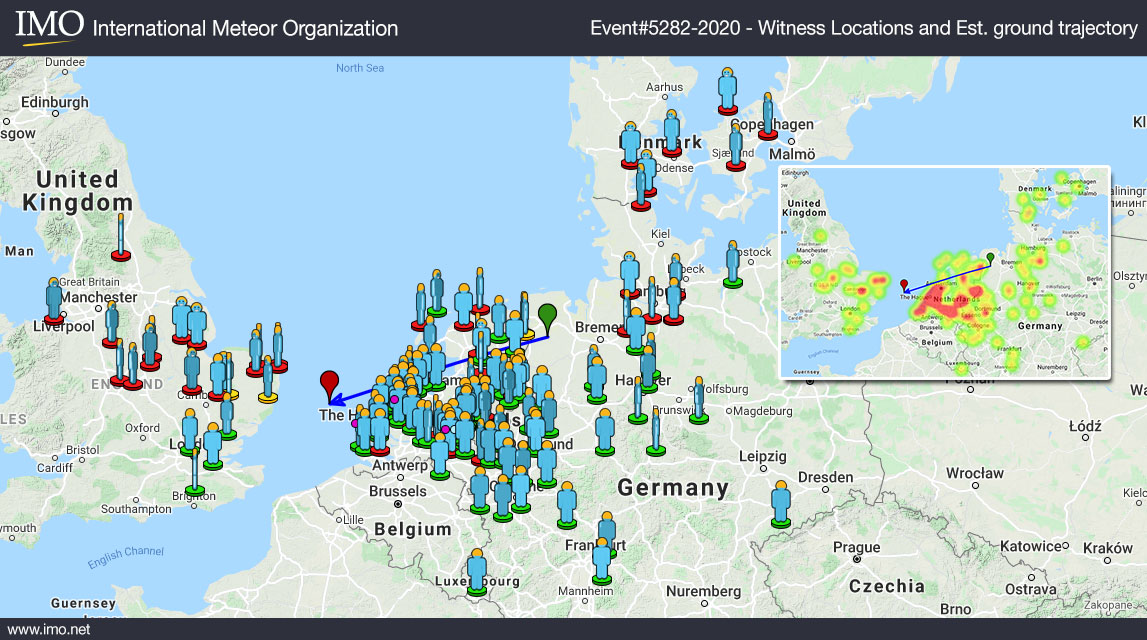
The majority of the eyewitnesses reported a very long bright and slow meteor. And it was pretty slow indeed…
Based on Denis Vida, postdoctoral associate at the University of Western Ontario and member of the Global Meteor Network team, the meteoroid entered the atmosphere at 34.1 km/s, reached the lowest altitude of ~91 km – far below any orbiting satellites and far below the ISS – and bounced back into space.
Earth-grazer from where?
Many meteoroids disintegrate in our atmosphere, or slow down and crash into the soil to become meteorites. But after its light show, this one kept going, departing our planet with a celestial “thanks, but no thanks.” An Earth-grazing meteor is a rarely measured kind of meteor caused by a meteoroid that collides with the Earth but survives the collision by passing through, and exiting, the atmosphere. Below is a graph shared by Marco Langbroek from the Leiden University. This graphs represents the altitude of the meteor versus the geographic longitude of its position.
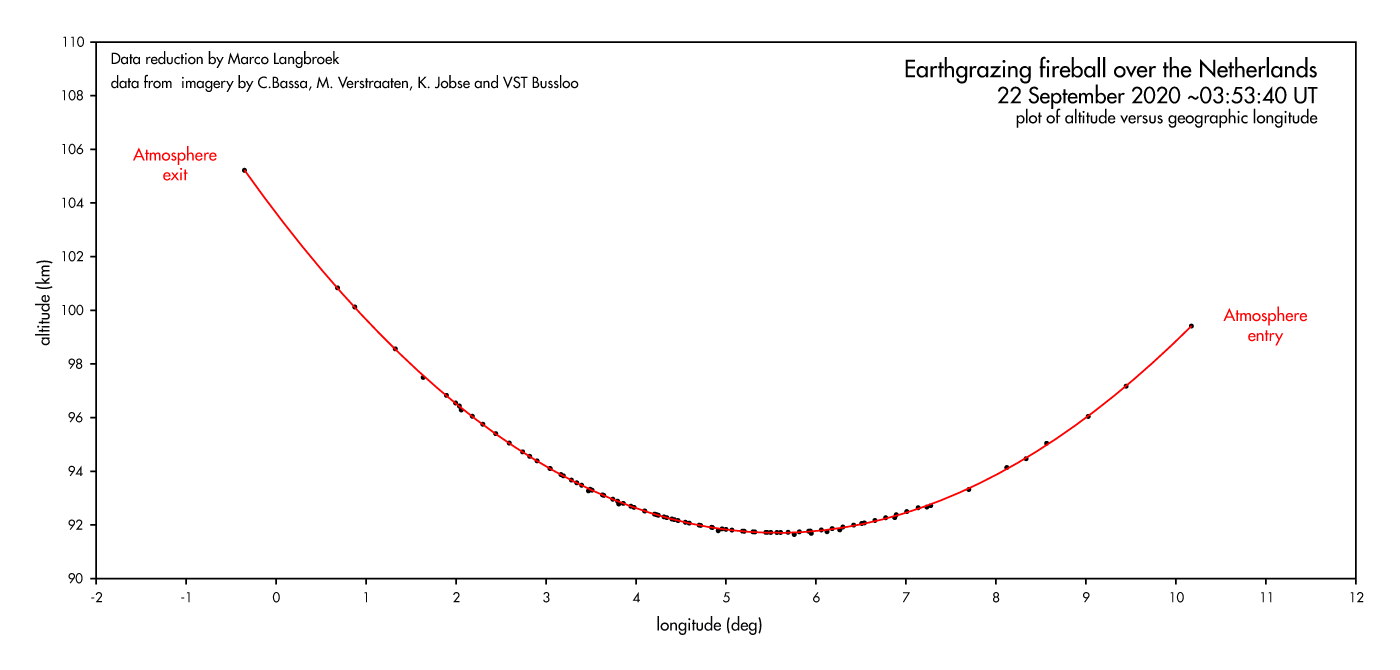
At least two teams computed the orbital elements of the meteoroid.
Below are Marco Langbroek’s provisional results:
| q | 0.2978 AU | a | 2.5616 AU |
|---|---|---|---|
| e | 0.8838 | i | 3.470 deg |
| argper | 240.053° | node | 359.3291° |
| pi | 240.053° | node | 239.38° |
| Q | 4.83 AU | period | 4.1 year |
| Tisserand | 2.687 | Perihelion date | 2020-8-12.49705873 |
|---|
Provisional radiant:
| RAobs | 163.8 | DECobs | +6.3 | V ini | 34.1 km/s |
|---|---|---|---|---|---|
| RAgeo | 165.9 | DECgeo | +3.4 | Vgeo | 31.9 km/s |
Below are Denis Vida’s provisional results shared on Twitter:
| a | 2.56 AU | q | 0.29 AU |
|---|---|---|---|
| e | 0.88 | i | 2.93 |
| w | 239.67 | O | 359.31 |
Denis Vida stated that the meteoroid had a Jupiter-family orbit but Parent body search found no conclusive hits.
(1/2) An earthgrazer above N Germany and the Netherlands was observed by 8 #globalmeteornetwork cameras on Sept 22, 03:53:35 UTC. It entered the atmosphere at 34.1 km/s, reached the lowest altitude of ~91 km and bounced back into space!@westernuScience @IMOmeteors @amsmeteors pic.twitter.com/5EgRivdcsu
— Denis Vida (@meteordoc) September 22, 2020


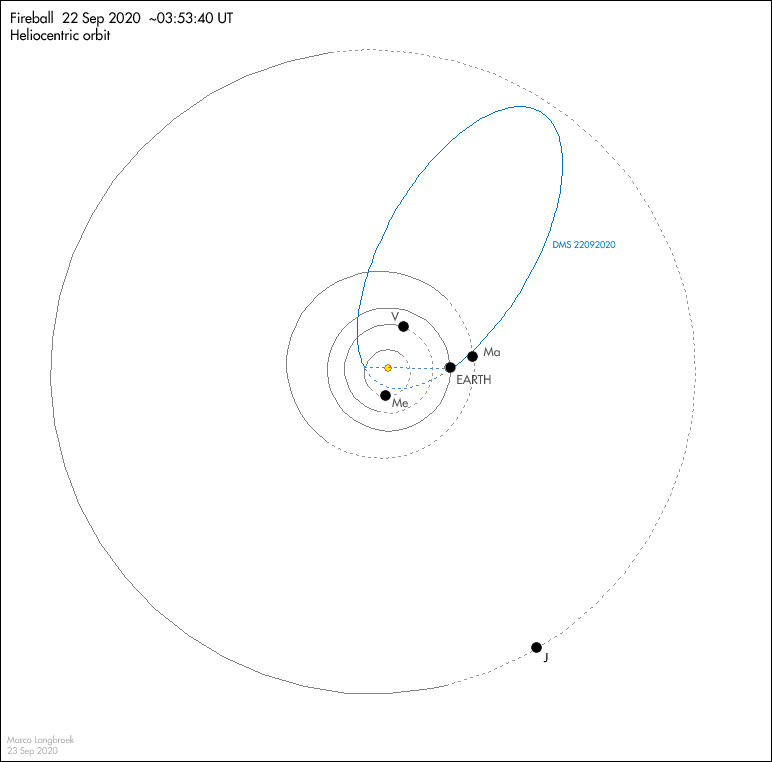
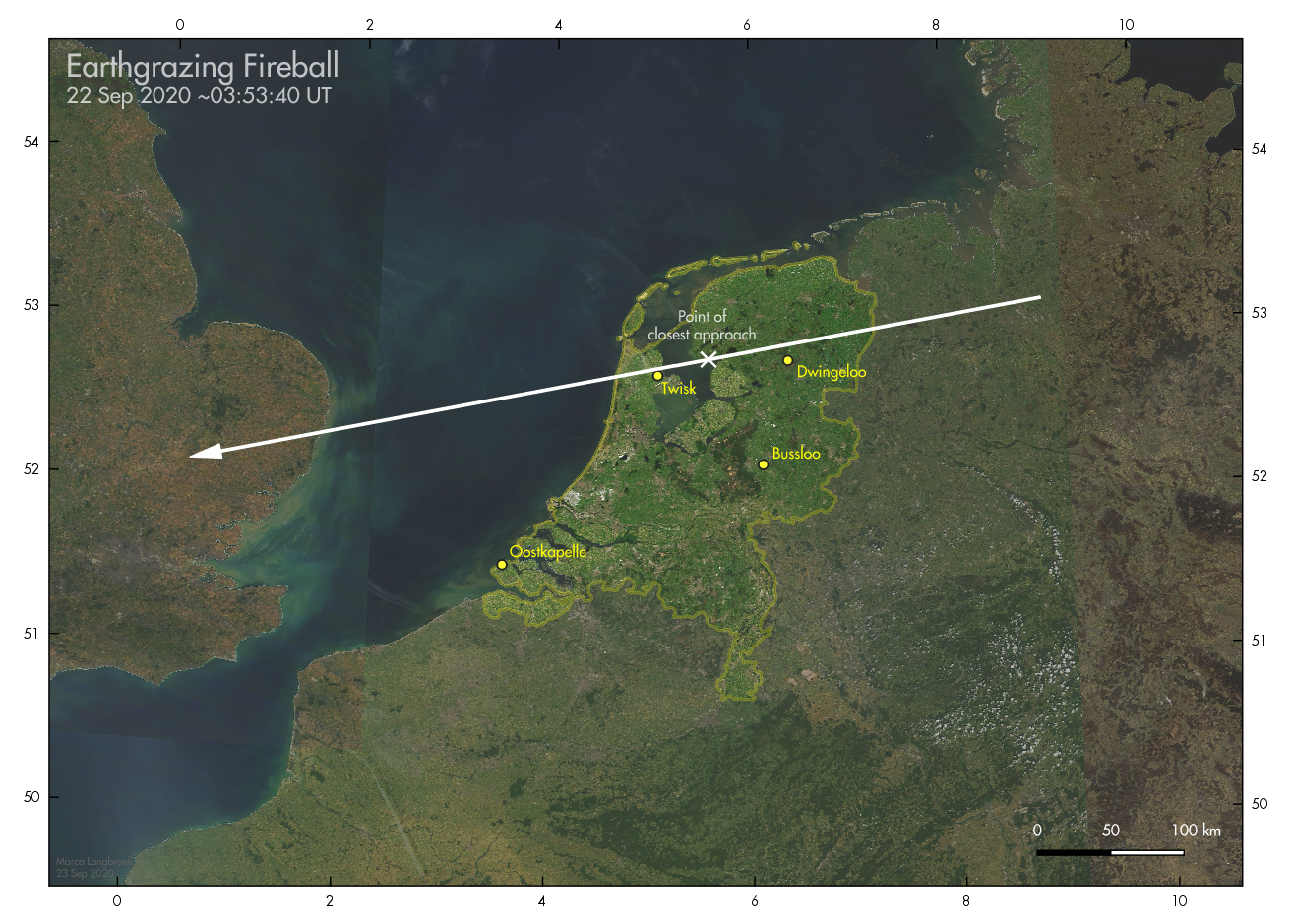
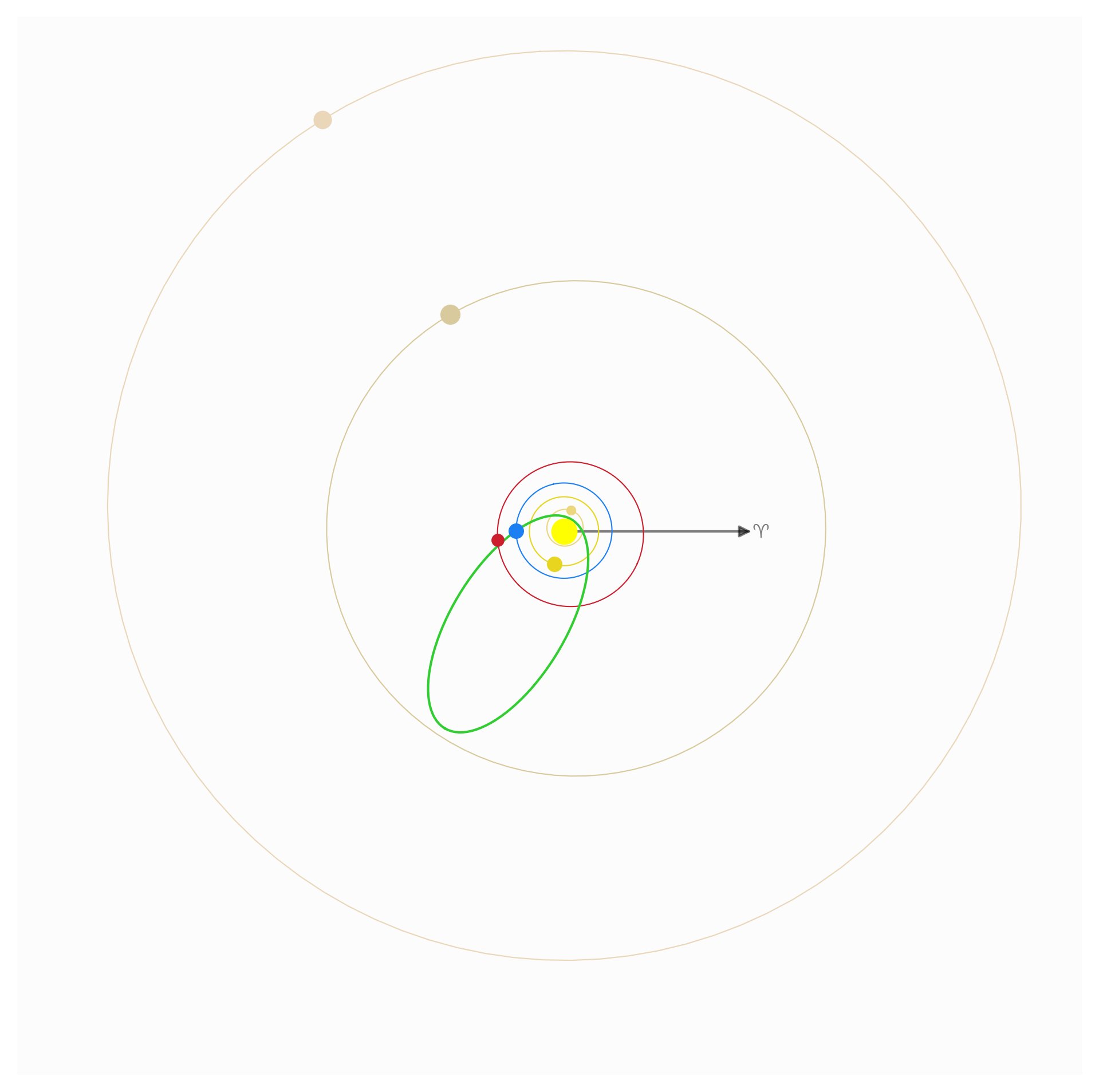
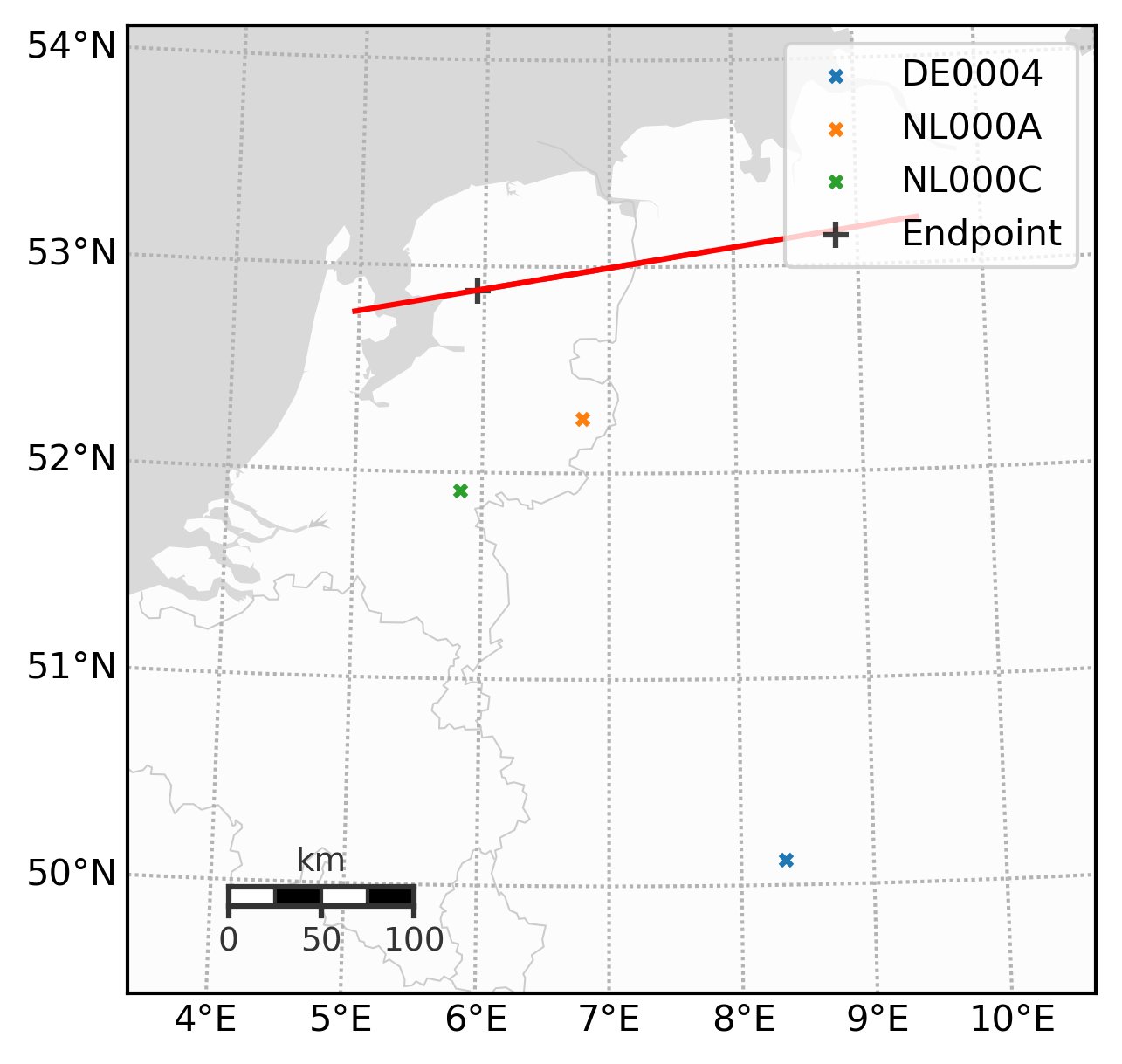

 You saw something bright and fast? Like a huge shooting star? Report it: it may be a fireball.
You saw something bright and fast? Like a huge shooting star? Report it: it may be a fireball.  You counted meteors last night? Share your results with us!
You counted meteors last night? Share your results with us!  You took a photo of a meteor or fireball? You have a screenshot of your cam? Share it with us!
You took a photo of a meteor or fireball? You have a screenshot of your cam? Share it with us!  You caught a meteor or fireball on video? Share your video with us!
You caught a meteor or fireball on video? Share your video with us!
2 comments
It was a slow fireball, lasted approximately 4 or 5 seconds and was completely without noise and had a broad swipe-track.
I am an amateur astronomer and have seen many meteoroïdes in my life( 71 years old) but something like this I never saw before.At first I really thought it was an UFO!
I forgot to tell that I saw it from my homegarden in Breda, Holland,51.30 degree north latitude and 05 degree east longitude , in northhern direction and a height of ( estimated) 55 degree .
Herbert Cotterell